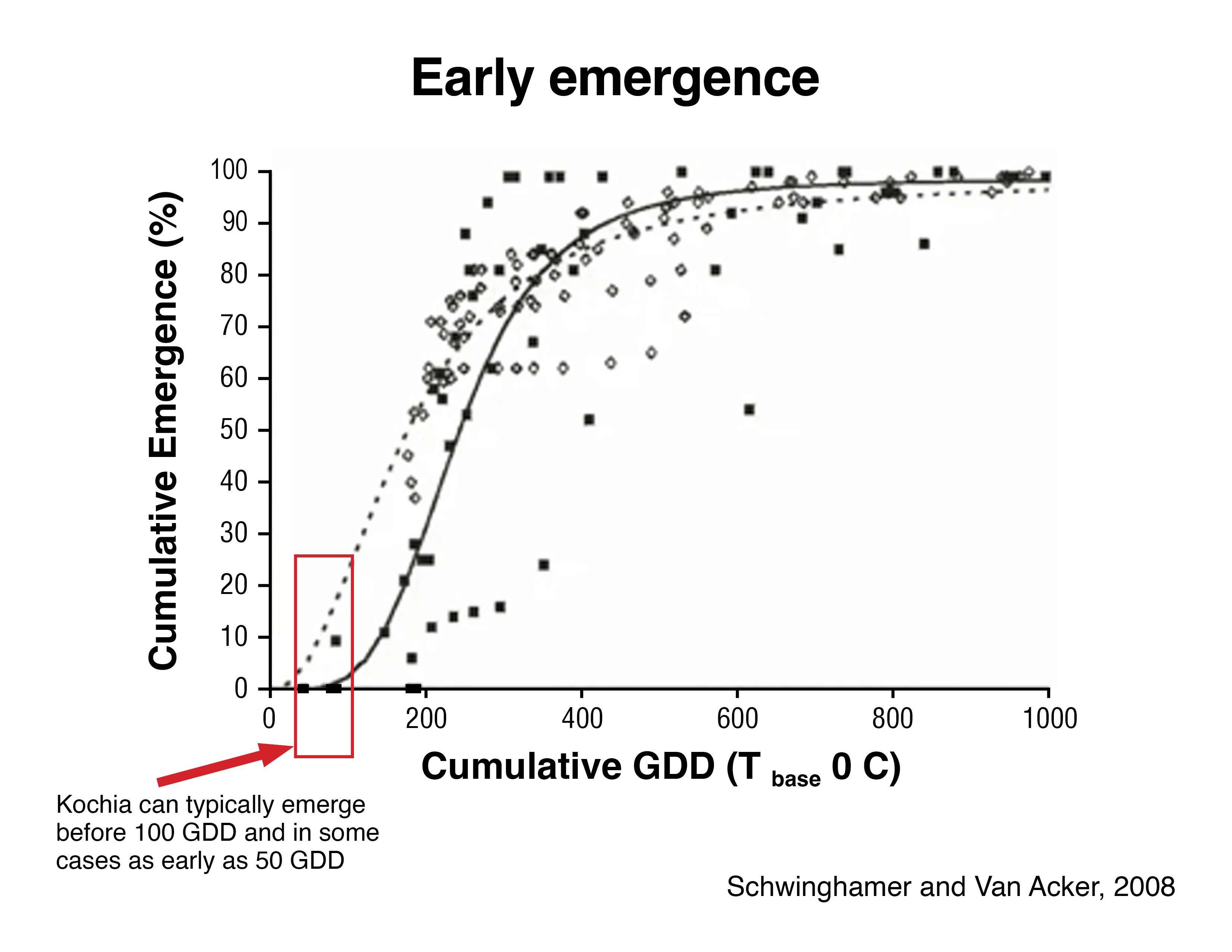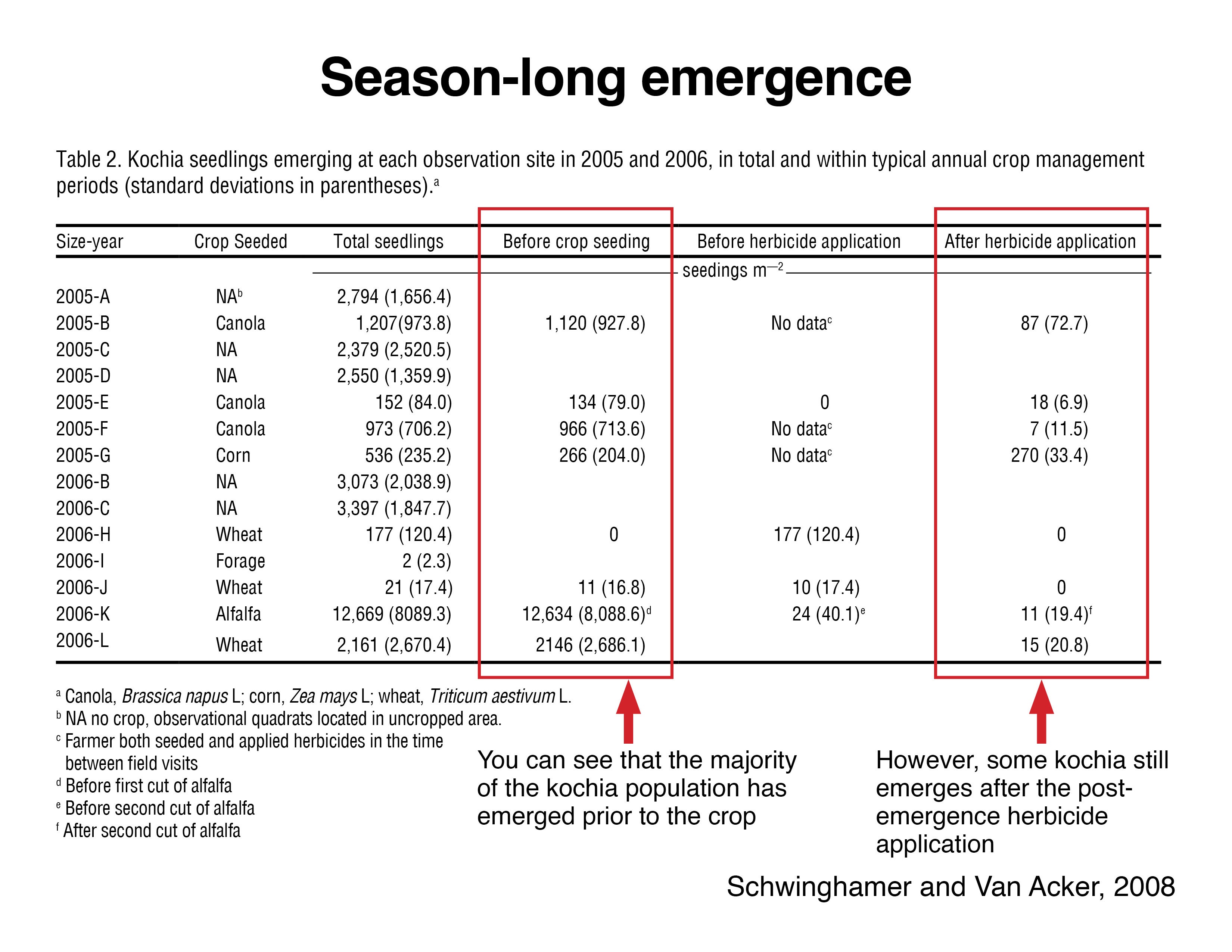Weed populations ebb and flow over a period of years, based on a complex set of factors. Then there are weeds that are a problem year in and year out.
Kochia is not only a persistent challenge but a weed that’s expanding its footprint on the Prairies. Long-known as a fixture in the southern Prairies, kochia’s range has started to work its way north and could reach the Peace region.
For the newest research and perspective on kochia, Charles Geddes’ office with Agriculture and Agri-Food Canada is the main resource and expert.
He explains that several factors are behind the seemingly unstoppable rise of kochia. These include the plant’s biology and ecology and its ability to adapt to shifting environmental and growing conditions.
Quick start in springtime
While farmers wait for soil to warm up before spring planting, kochia shows no such hesitation. It jumps out of the ground to get a head start before spring-planted crops and most other weeds.
Without much early-spring competition, kochia can get established to such an extent that growers are chasing it all season long.
In fact, as Geddes explains, kochia has several unique characteristics in its biology that allow it to thrive under the growing conditions of the southern Prairies. These traits include tolerance to heat, drought and saline conditions. Under conditions where crops struggle, kochia can thrive.
Head Start

As shown in the graph, data gathered from research done by Timothy D. Schwinghamer and Rene C. Van Acker in Manitoba in 2008 shows that kochia can appear in the field as early as March and April (before 100 growing degree days). Geddes notes that researchers typically use 0 degrees as the starting point for their fieldwork because kochia can start growing in very cool temperatures.
Another tricky factor is that kochia can emerge after a post-emergence herbicide application, making it a threat throughout the growing season.

Epic seed producer and super spreader
Kochia is not only a prolific seed producer – with each plant putting out up to 100,000 seeds in its lifetime – it’s also a very efficient seed distributor.
If it’s not controlled sooner, kochia will die, dry out and then break at the stem with the wind, rolling as a tumbleweed through neighboring fields.
Recap
Why is kochia such a tough challenge for farmers in Western Canada?
- It can emerge from the ground as early as March or April, long before any other plant.
- It has a long emergence window, with emergence occurring after post-emergence herbicide application.
- It can tolerate heat, drought and saline soil.
- This weed can produce up to 100,000 seeds in its life span.
- If kochia isn’t dealt with, the wind can break the plant off at the stem, sending it tumbling, spreading seed for up to 1 km.
So, how quickly is this plant becoming a problem in southern Alberta and North America?
In the next part of this Let’s Talk Kochia series, Charles Geddes explains how it is spreading and its growing resistance to glyphosate, making it a uniquely tough opponent for farmers.
